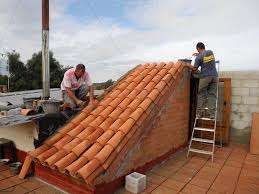5 Tips for Roof Inspections
With warmer climate comes more rain, and a harmed roofing system can bring a great deal of troubles. A dripping roof covering can additionally make your Air Conditioning work overtime. Utilize these tips to securely examine your roofing system.
Your roofing is just one of one of the most important parts of your house. A well-maintained roof in good fixing protects your residence from water breach, which’s why it’s so important to evaluate your roof covering regularly. Property owners insurance usually covers roof damage but extra protection may be required for specific roof covering needs.
It’s a great idea to inspect your roof covering in the springtime or very early summer season, to ensure that it hasn’t been damaged by winter months storms, snow, ice or hale. Evaluate your roof covering once again in the fall, to check for damages done by summer season electrical storms, falling tree arm or legs and various other hazards.
Should you obtain your roof evaluated by a professional? Yes, if you can manage it. Roofing system examination prices can vary from free to a few hundred dollars, sometimes relying on whether the specialist really feels the roofing needs repair. Nevertheless, if money is tight or you can not discover a specialist to come out and check your roofing, you can safely do it on your own adhering to these 5 steps.
Roof inspections texas is the source of this article, check them out.
5 Roof Inspection Tricks
1. Seek Algae, Moss, or Stacks of Leaves
If you have field glasses, you can begin your DIY roof covering inspection from the ground. Start by walking your house and also examining your roofing for moss, piles or leaves, algae, or various other growths or debris. Algae, moss, lichen as well as heaps of fallen leaves can cause significant damage to a roofing system. That’s due to the fact that they can catch moisture, which can permeate right into the sheathing listed below your tiles, as well as even right into the structural elements of the roofing itself.
Moss is especially harmful, due to the fact that it soaks up rain like a sponge. The moisture can cause the wood structure beneath your roofing system to mold and mildew as well as degeneration, which can compromise the structural honesty of your roofing system. Moss, leaves, lichen or algae on your roof covering needs to be removed promptly. You can do this on your own by using moss awesome and also cleaning the angering moss away with a broom or brush, specifically if the problem is brand-new. When you have your roofing re-shingled, think about acquiring moss-resistant shingles– they aren’t a lot more pricey than the regular kind, as well as they can maintain moss away for the life time of the roofing.
2. Look for Buckled or Curled Roofing Shingles
Hot air in your attic can cause your tiles to warp, buckle or crinkle. Twisted roof shingles can endanger the stability of your roof, letting in water and also causing inadequate air flow. Crinkling asphalt tiles should be replaced. If more than one-third of your tiles are crinkling, it’s time to re-shingle the entire roofing system.
3. Check for Harmed, Missing Out On or Old Shingles
Missing or damaged roof shingles can additionally let water seep with your roofing. If you have wooden shingles or tremble, check them for indications of dry rot, either from the ground or from a ladder (do not walk on a wooden roof shingles or shake roof covering. Asbestos, slate, or clay tile roofings can suffer from damage, so seek split, cracked, broken or entirely missing shingles. Examine a metal roofing system for indicators of deterioration, metal seams, matching, rusting, or various other wear.
If you have asphalt tiles, look for indications of wear as you cleanse your gutters. Asphalt consists of gravel-like granules. As the roof shingles age, these granules will certainly damage free, as well as locate their method right into your seamless gutters. If you see a lot of asphalt granules in your gutters, check the roof covering carefully for harmed or missing out on tiles.
4. Evaluate the Roofing System Up Close
If you can, get up on a ladder as well as check your roof up close. While you’re up there, search for damages to the flashings around the smokeshaft, dormers and also vent pipes. Damaged or corroded flashings can let water into the indoor framework of your roofing, and can contribute to rot in the framework of your roofing as well as the walls of your house.
5. Examine Your Attic
If your house has an attic room, it is essential to go into it and also seek signs that water has leaked via your roofing system. Examine your rafters and also the wooden inside of your roofing system for indicators of moisture, mold and mildew as well as rot. Inspecting your attic room for indicators of water leak can aid you find damage that may not have actually shown up from the ground or from your ladder. When possible, evaluate your attic for leakages throughout a heavy rainfall; this will reveal you whether your roofing system has any active leaks.
Your roof is your house’s first line of protection against the elements. Even if you can not pay for to have an expert roofing system service provider examine your roofing twice a year, you can securely and carefully check it yourself for signs of damages and wear. Regular DIY roof evaluations will aid you learn more about your roofing, so you’ll have the ability to acknowledge troubles prior to they obtain as well serious.
